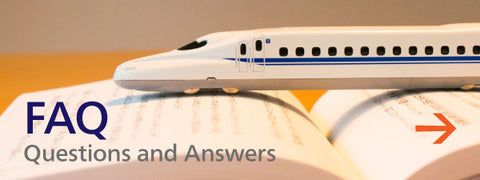The History and Technology of the Shinkansen

The Shinkansen, connecting Tokyo and Osaka in just 2.5 hours today. Let's dive into its history and the secrets behind its speed.
When Did the Shinkansen Start Operating?
The idea of creating a super-fast railway between Tokyo and Osaka began in 1957.
During this period in Japan, there were growing concerns that high-speed highways and the expansion of air travel might replace trains as the primary mode of transportation. At that time, the fastest trains in Japan were steam locomotives, capable of reaching a top speed of 95 km/h, and the journey from Tokyo to Osaka took a grueling 7.5 hours.
It was during this era that a plan was proposed by Japan National Railways' research institute. The plan aimed to dramatically reduce travel times by introducing high-performance trains equipped with cutting-edge technology. This proposal eventually evolved into a national project, backed by the government.
Subsequently, in just 5 years from 1959 to 1964, the Shinkansen, specifically the Tokaido Shinkansen connecting Tokyo and Shin-Osaka (a station built just for the Shinkansen), was constructed and opened to the public, reducing travel time between the two cities to just 4 hours.
Over the years, the Shinkansen's speed has continuously improved with advancing technology.
As of 2023, the "Nozomi" reaches a top speed of 285 km/h. When the Chuo Shinkansen (Linear Shinkansen) opens in 2027, it might even exceed speeds of 500 km/h.
The Technologies Enabling the Shinkansen's Speed
Here are some of the reasons why the Shinkansen can achieve such high speeds:
Streamlined Body: To move at ultra-high speeds, minimizing air resistance is crucial. That's why the front cars of the Shinkansen have a streamlined shape, inspired by aircraft design. This reduces wind resistance, making it possible to travel quickly and efficiently.
Gentle Curves: The Shinkansen's tracks are specially designed with long, smooth curves, allowing the trains to maintain high speeds even during turns. Additionally, Shinkansen tracks are elevated or placed underground to eliminate level crossings, ensuring a smooth journey.
Automatic Train Control (ATC): The Shinkansen is equipped with an Automatic Train Control system, known as ATC. This system automatically adjusts the train's speed, ensuring safe operations. For instance, when approaching sharp curves or speed-restricted zones, ATC manages the speed to ensure the train travels safely.
In summary, it's the combination of track/train design, technology, engineering, and control systems that allows the Shinkansen to run fast and quietly.
Supported by these technologies, the Shinkansen has been operating without major accidents since its inauguration in 1964, making it one of the safest and most efficient modes of transportation in the world.







